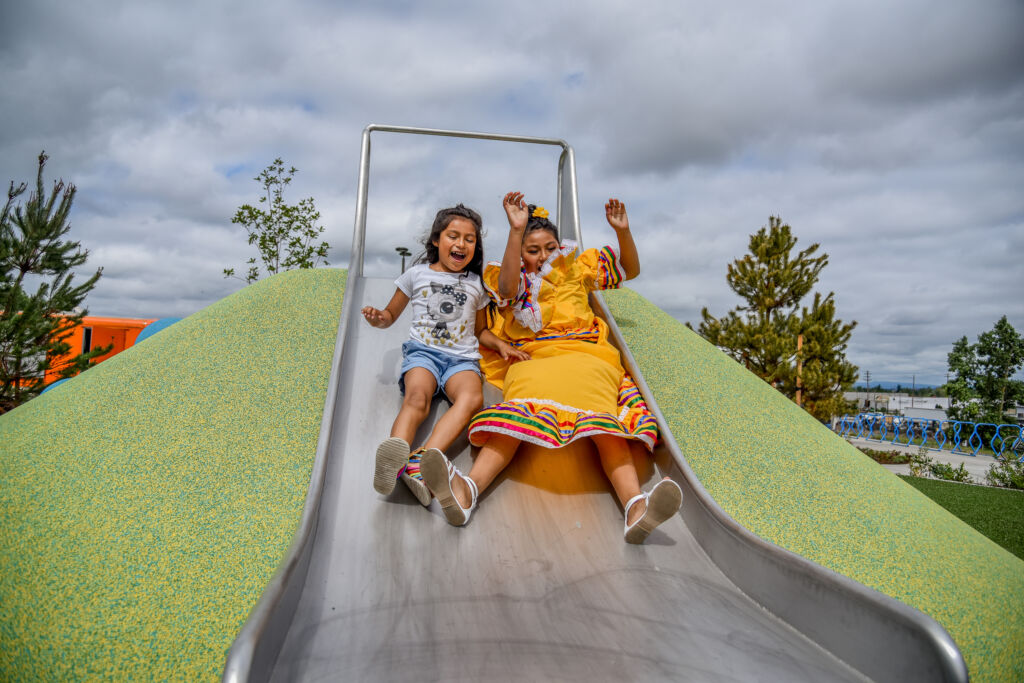One year ago, as we looked ahead into 2019, we promised that in addition to our regular services–documenting the impacts of urban waters work, developing educational materials and webinars, offering scholarships to support in-person networking events, and sharing great resources–we would build on important themes that bubbled up through many years of conversations at events such as the Urban Waters Learning Forum. The emergent themes we identified were anti-displacement strategies, community resilience, and environmental justice and equity. This meant doing more intentional, collaborative work, while highlighting best practices and sharing effective tools and resources to help others tackle these themes. In 2020 and beyond, our goal is to establish working groups, or collaboratives, consisting of leaders from within the network who are developing original tools and advancing these conversations.
Now that it’s again time to consider our past and future, we find ourselves inspired and re-energized by what our members have accomplished, not just on the emergent themes, but in everyday work on behalf of America’s urban waters and communities. We look forward to continuing to provide spaces, places and means to connect Urban Waters Learning Network (UWLN) members as they innovate solutions in these areas and others.
Growth and Sustainability

A work in progress, this map shows a representative sample of UWLN membership. Member organizations span cities throughout the country, and include non-profit organizations, government agencies, businesses, and educational institutions. Map developed on Esri by Renée Mazurek, UWLN Staff
Throughout 2019, we saw our membership continue to grow as more people signed up to participate in our online platforms. We also saw website traffic increase from about 600 to 700 visitors per month, with increased engagement on new, more interactive website tools (for a history of our growth metrics and reach, see our public Snapshots, published semiannually on the UWLN website). But while we recognize the importance of growth, it is just as important to sustain the existing network and make sure we are supporting initiatives and innovations among our current members. 2019 was a time to look inward and to find ways to build on the amazing leadership and innovation happening within the network. In 2020, we will use network mapping to identify great projects, conversations, and partnerships, as well as gaps where more support is needed.
Anti-Displacement Strategies and Building Community Resilience
While we, as urban waters practitioners, do not need to come up with all the policy solutions ourselves, we should know how to make the right connections and have the right people at the table. This is the path to equitable development. — Renée Mazurek, UWLN staff
Having identified the emergent themes, we began the year by administering a survey to find out more about challenges our members were experiencing first-hand as they dealt with displacement of residents in the neighborhoods where they work. We used the results to shape a series of webinars, which highlighted innovations in housing, workforce development, and acheiving social and economic justice alongside environmental priorities. Central to all of these innovations–and the projects we highlighted–were good partnerships.

Residents enjoy the new green spaces at Cully Park and are vocal advocates for affordable housing. Photo: Living Cully
This led to elevating innovations such as the Living Cully Partnership, whose members include the city of Portland, Habitat for Humanity, the Native American Youth and Family Center, and the lead nonprofit organization, Verde. Building Cully Park in Portland was a six-year process, and here again it’s important to recognize that sometimes it’s more important to pay attention to process and sustainability than to measure quick and fast growth. It can take time to be intentional about placemaking while adequately meeting the needs of residents. The Living Cully Partnership is an example of how a process-oriented approach can lead to addressing environmental, economic, and social goals at the same time.
The 2019 webinars, where you can find more information on the Living Cully Partnership and many other examples of strategies for reducing displacement and building community resilience, were recorded and can be found in the Resources section of the UWLN website.
In 2020 and beyond, the webinars and blogs we published on these topics will form the foundation as we move forward with identifying best practices, developing new tools and resources, and cultivating leadership among our member organizations.
Environmental Justice and Equity
As we have previously noted, environmental justice is a part of everything we do, and it is water cities that are shaping the people-centered approach to solving environmental problems. This approach is also about understanding that people are crucial members of healthy ecosystems, as stewards of the land and water.
As urban practitioners and leaders gain seats at more tables, they are helping to change the conversation within the larger environmental movement, elevating the role of city spaces and urban communities and teaching others how to better involve people in environmental problems. – Maria Brodine, UWLN Staff
Approaches that integrate social and economic issues and focus on addressing environmental injustices have been shown to foster participation and stewardship, while addressing issues of immediate concern to communities, such as public health and access. Throughout 2019, we highlighted efforts like Groundwork USA’s Brownfields and Climate Safe Neighborhoods programs, which use a place-based approach to address the fact that the communities where we work are often the first and most heavily impacted by things like pollution and climate change, as well as historical and political incursions, like redlining.
Communities and governments at all levels are working together to clean up polluted land and water and to bring new uses to old sites. People are now reconnecting with their waterways as places of active transportation and recreation… While there will always be a role for waterfront industry, a new paradigm calls for that industry to co-exist with the public and to be sustainable. Rather than excluding and polluting, new industry must be inviting and regenerating. – Adi Nochur, UWLN Staff
We also highlighted education and outreach strategies that help people to recognize how big, seemingly insurmountable issues like climate change affect them directly and, moreover, how they can have an impact by working together and focusing on solutions.
Solutions are an integral part of our climate story that must be harkened back to time and again if we seek change. As climate and ocean change are problems that are bigger than any one individual, so too are the solutions. Thinking beyond ourselves, and our research, while fostering a sense of community brings light to the solutions that are already proving beneficial. – Kait Birghenthal, Program Supervisor for the National Network for Ocean and Climate Change Interpretation (NNOCCI)
Last but not least, we continued development of the Learners to Leaders: Environmental Justice Literacy curriculum, engaging in field testing with high school aged youth and instructors at Groundwork Denver. We will unveil the new edition of the curriculum in January 2020.
River Rally 2019 and One Water Summit: the Link Between Equity and Building Effective Partnerships
Building good partnerships–by building lasting relationships across sectors and breaking down barriers–became a central theme in our own work. Finding ourselves in our second year at the U.S. Water Alliance One Water Summit, the Urban Waters Delegation–co-led by the UWLN and the EPA Office of Water–expanded its membership, incorporated youth participation with five young leaders from Freshwater Future, and made concrete goals to break down barriers to communication and collaboration not just between sectors, but within our own organizations. 2019 also saw greater synergy between the conversations on building effective partnerships–a major theme at One Water Summit–and those conversations happening at River Rally 2019 about solving challenges through collaboration and addressing racial equity in environmental spaces. After all, we cannot effectively address the needs of the communities where we work, and make sure the right partners are at the table, without doing the work to become anti-racist organizations.
Telling New Stories, and Telling Stories in New Ways

Left: Participants in the June 2018 Denver Urban Waters Bike Tour pedaled along the Sand Creek Greenway to its confluence with the South Platte River, learning about water quality impacts from storm water, flood episodes, stream depletions, and wastewater effluent. Middle: Bike Tour participants stop to sample macro-invertebrates (middle) as an indicator of stream health. Right: This WEco Rain Barrel Building workshop attracted more than 60 participants to learn about the role of water in the West and opportunities to conserve water. Photos: Water Education Colorado (WEco), members of the South Platte Urban Waters Federal Partnership
As always, documenting the work of our members, telling their stories, and communicating the importance of urban waters work is one of our priorities. The original recipients of the EPA Urban Waters Small Grants are continuing to build on the work they’ve done in the past and to leverage additional support to expand their programs. Those supported by the EPA and NFWF Five Star initiatives, as well as members of the Federal Partnership, also continue to innovate and grow. And we continue to get new members who may not have formally received any EPA or NFWF grants but do important urban waters work and wish to benefit from being part of the UWLN. While our Impact Stories provide a bank of information about the original Urban Waters projects, we are now in the process of updating that material by revisiting those stories and finding new ways to tell them — such as our new interactive Story Maps. Looking forward to 2020 and beyond, we will be mining new sources for additional Impact Stories (such as organizations focused doing environmental justice work in citiies), developing new Story Maps, and looking for more innovative ways to tell these important stories.
Be sure to stay tuned for more information about how you can get involved; and as always, feel free to contact us directly if you have ideas, or if you’d like to get more directly involved in any of the initiatives described above.


Thanks for that terrific summary. It’s great to see that the Urban Waters Learning Network is continuing to thrive and grow, and I appreciate how you’ve incorporated anti-displacement and Environmental Justice issues into your programming. Keep up the good work!